
JESSICA EARNSHAW | Montefiore
Montefiore Children's Hospital, located in the Bronx, hosts an annual prom for their teenage patients every year, offering them a temporary escape from their illness by providing them an opportunity to feel like normal kids for an evening.

KENDRICK BRINSON | Diary of a Photographer
My grandmother June Mama fell in the rose bush outside of her home in Beverly Hills, Florida. In previous falls, she broke a knee, hip, wrist, and shoulder. On this occasion, she cracked her pelvis and broke bones in her forearm. At the time, she was living alone, so she had to scream for help from the bushes. My mother received a phone call from the company that was alerted when June Mama pressed the panic button that hangs from her neck. Before she heard if her mother was okay, she drove 421 miles to be by her side.
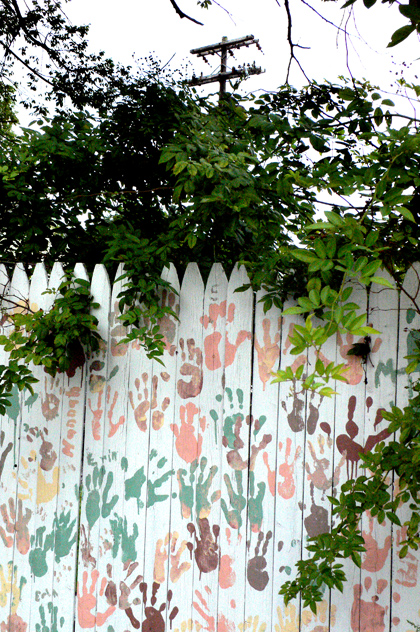
CHARLES HARBUTT | Romance for the Real, Part II
Issue 12
In the first chapter, I pointed out that the human ability to draw appears to have evolved from our primate ancestors, with whom we share that paleomammalian—visual, emotional—brain. Unfortunately, no sightings have been reported of gorillas drawing in the wild. Perhaps the researchers were so focused on the conscious topics of their academic studies they didn’t SEE the drawings in the sand. They were blinded by what they were looking for.
MARIELA SANCARI | Home
Home is an ongoing project on the people living close to my mother’s house in Abasto, a little town in Argentina. These people have been our neighbors for a long time, since I was a child but only now, after many years living in another country, I come back and see them with a different light. I see them as extra-ordinary characters.
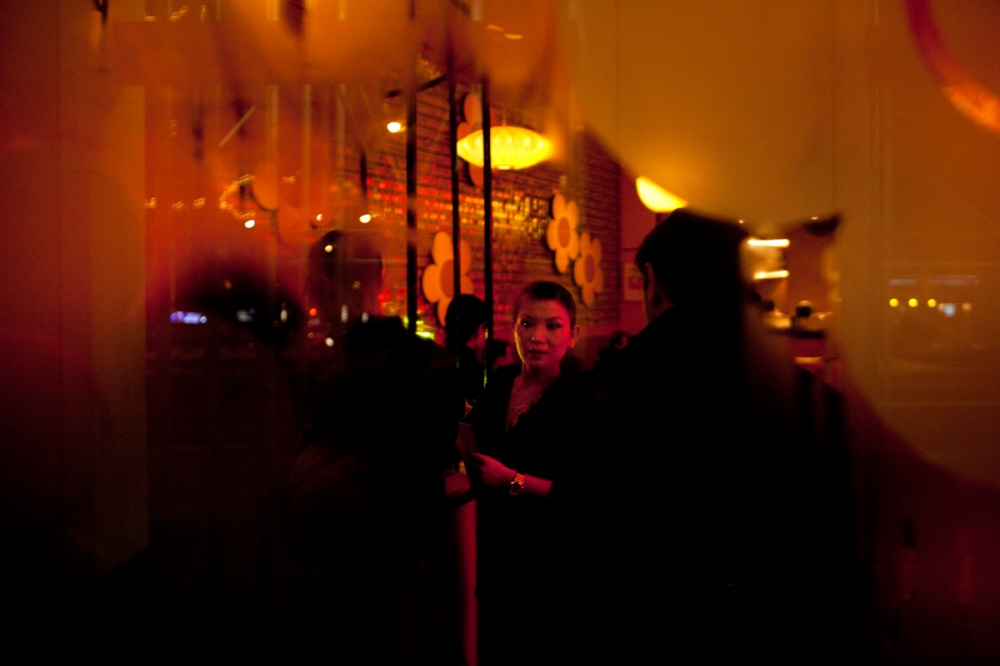
DAVID WALTER BANKS | Diary of a Photographer
My most vivid and memorable dreams seem to come during the purest moments of clarity in my life. These nights do not necessarily coincide with the times thatI’m most at peace, nor those when I’m most confident about my own path in this life. Rather, these dreams of consequence seep through my subconscious when I allow myself the space, either physical or mental, to crowd out all the thoughts, worries, pains and joys that clog my daily thought patterns and leave scant room for free thinking.

TABLE OF CONTENTS | Issue 12
Issue 12
FeaturingJan Banning
Katie Orlinsky
Patrica Lay-Dorsey
Markel Redondo
Henry Jacobson
Nina Berman
Charles Harbutt
Jeff Jacobson
Larry Fink
Richard Mosse
Luceo Images
Marcia Michael
Mayra Montero
Paul McDonough
Alma Har'el
Neil I. Jacobs

Letter to the Reader, Issue 12
Issue 12
It has been more than six months since I published an issue of Visura Magazine. It has been a while. I have been soul searching, I guess, and I have distanced myself from everyone, including Visura. During the time, I was happy to learn that this platform has reached one million articles read since January 2009. Naturally, this made me reflect on the future of Visura.
JAN BANNING | Looking for a Hidden Past
Issue 12
I SOMETIMES WONDER, why do people do the things they do. Specifically, why did I become interested in focusing on wartime subjects when I was born and raised in times of peace?My parents were born during the early 1920’s in the Dutch East Indies, a colony that became modern Indonesia following World War II. My mother was sixteen and my father was twenty years old when the War began, which abruptly shattered their happy and prosperous youth, leaving an indelible impression.

KATIE ORLINSKY | Libya
Issue 12
Many people don’t know I was there with Tim Hetherington and Chris Hondros on the day we lost them. I wasn’t physically injured—not a scratch. I think the journalists at the hospital all made the decision to take my name out of their stories, because one of the things I blurted out when I returned to the hospital was that my parents didn’t know I was there.The unrest in Libya began in mid-February and quickly escalated into a people’s revolt that left thousands dead. During the February fighting, protestors looted most of Gaddafi’s military bases in the east of the country. Although some of what was happening was obviously inspired by Egypt, the fact that so many young men carried Kalashnikov rifles and wore mismatched military garb made the scene uniquely Libyan.
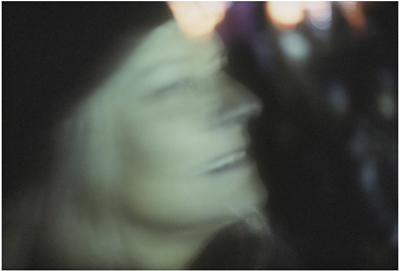
JEFF JACOBSON | In the USA
Issue 12
Jeff Jacobson was born in Des Moines, Iowa, in 1946. He has published two books, My Fellow Americans, University of New Mexico Press, in 1991, and Melting Point, Nazraeli Press, in 2006. Jacobson joined Magnum Photos in 1978. He later left Magnum to help found Archive Pictures. Jacobson's photographs are in the permanent collections of The Whitney Museum of American Art in New York, The San Francisco Museum of Modern Art among others.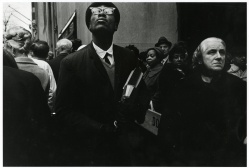
Photographer Paul McDonough
Issue 12
Raised in New Hampshire, Paul McDonough attended the New England School of Art in Boston to study drawing and painting. Finishing his studies in 1963, Paul met Tod Papageorge, the noted photographer recognized for documenting the chaotic tension between fans and athletes in professional sports during the height of Vietnam. Swapping ideas and inspired by Tod’s recommendation, knowledge, and passion for the medium, both photographers formed a friendship that would resonate later in Paul’s career trajectory. He moved to New York City in 1967 where he was transfixed by the city’s soul and kinetic energy. In the city, Tod introduced him to renowned photographer Gary Winongrand, and so begun the transferring between souls.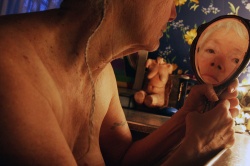
PATRICIA LAY-DORSEY | Falling Into Place
Issue 12
I WAS 45 YEARS OLD when I took my first unexplained fall. Until that cold January day in 1988, I had run marathons, ridden 200-mile weekend bicycle tours with my husband, and had only recently stopped taking modern dance and ballet classes. My body had always done whatever I asked of it until suddenly, it became the most unpredictable part of my life. Eight months after that first fall, I was diagnosed with chronic (primary) progressive Multiple Sclerosis. From that moment on, I saw my body as a stranger.
LUCEO IMAGES | Diary of a Photographer
WE ARE SIX PHOTOGRAPHERS—David Walter Banks, Kendrick Brinson, Matt Eich, Kevin German, Daryl Peveto and Matt Slaby—unified by a search for answers in an often abstract and rapidly evolving global environment. We seek to understand the emotional resonance of each situation we chance upon, depicting the people and places we encounter with empathy, respect and curiosity.
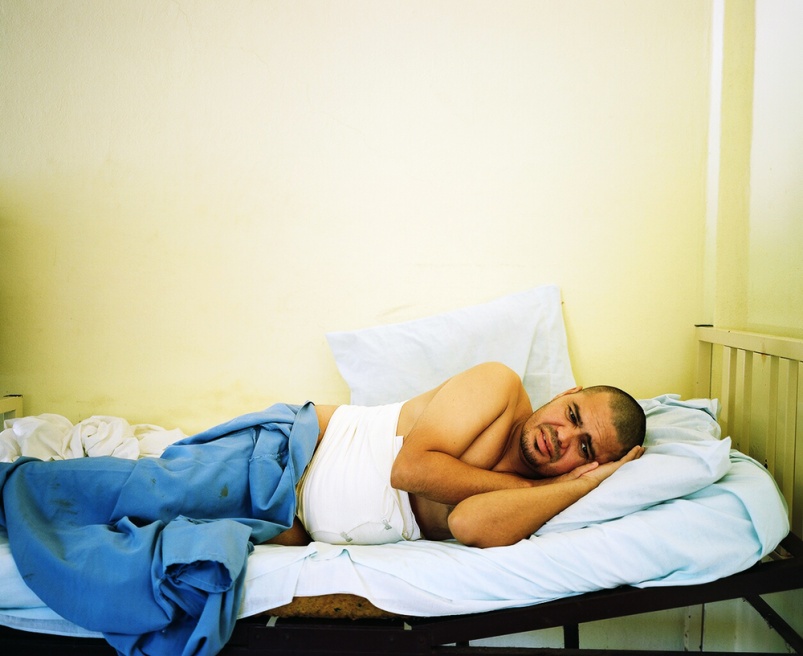
MARKEL REDONDO | In God’s Hands
Issue 12
Many Central Americans leave their home countries for better working opportunities, to provide for their families and escape violence. They receive warnings that the journey is dangerous, and life in the U.S. is not easy. Still, they choose to embark on this arduous journey.Since 2010, I have been documenting the journey of Central American men, women and children while attempting to cross the borders from Honduras to Guatemala through Mexico and into the United States. I have photographed and interviewed victims, survivors, and heroes; meanwhile, I have witnessed the desperation that drives a person to leave his or her family, home, and country in the hope of a better life.
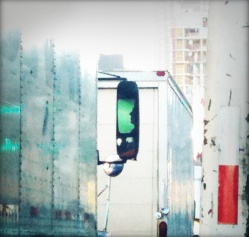
HENRY JACOBSON | Communiqué
Issue 12
I recently had a discussion about evolution. I argued that the next stage in human evolution was in the brain, in how it functions, and most importantly, how it communicates. I suggested that this shift would be rapid, fueled by advances in communication technology. It so happens that this debate took place after watching David Fincher’s the social network, in which the great Justin Timberlake utters a cocaine-fueled vision of the present/future; We lived on farms, then we lived in cities, and now we're going to live on the Internet.
CHARLES HARBUTT | Romance for the Real, Part I
Issue 12
A NOTE ABOUT HISTORIES. Most professional historians pride themselves in presenting the facts of history without any comment or response and that is valuable, like good journalism. However, the result is often dull and reductive: no juices, no attitude to what is being reported. These essays are not like that, and are not written from an observer’s detached point of view. I make pictures and what I’m reporting is VERY meaningful to me. I’m trying to describe the situation for a visual person in a verbal world.
NEIL I JACOBS, ESQ. | Casualties of Law
Issue 12
During my thirty years practicing law, I have worked with many creative people, including photographers, writers and musicians. Ten years ago, I formed my own law firm size. Tired of a relentless step toward an increase in law firms, I felt a sincere desire to do things my own way, and approach my practice with the same individual voice.
NINA BERMAN | The Afterglow
Issue 12
THERE WAS AN AFTERGLOW, a lingering light, and a feeling before the crush when the world tightened and the future we now suffer was sealed. I reach back to those days in between with such naked nostalgia I can hardly understand it. It is something more than hindsight, it is the physicality of the images, the simplicity of purpose, my purpose too, the complete lack of irony, a kind of innocence. Some call this period after September 11, a period of unity when America came together. However, that is political speak designed to manipulate and force us into narrow visions and proscribed postures.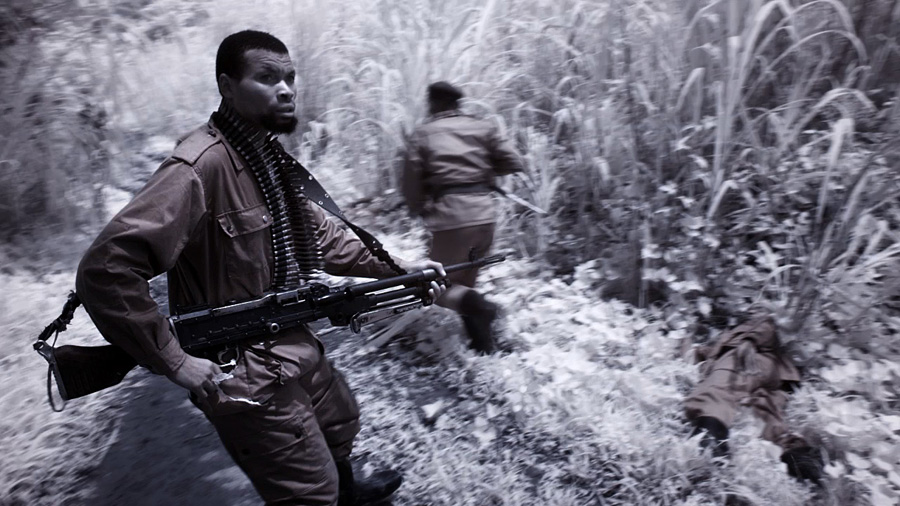
RICHARD MOSSE | Via Goma
Issue 12
It is one year since I first visited the Congo. On that journey, my impulse was an unravelling of forms, of method, of purpose. After a year’s reflection though, the thread is tangled up again. One year’s elaboration of my initial journey dissipates with the honest satisfaction of a heavy day’s walk across front lines into rebel territory.
FOTOVISURA PAVILION | In Love and War
Issue 12
In Love and War exhibition reflects on the fragility of human life, in the hopes of bringing the viewer to a place of compassion and solicitude. This exhibition—featuring photographers Milagros de la Torre, Henry Jacobson, Richard Mosse, Jessica Hines, Justin Maxon and Grant Worth—was part of The FotoVisura Pavilion—sponsored by The Viso Lizardi Family—during the 2011 New York Photo Festival.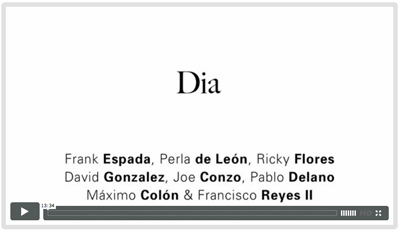
FOTOVISURA PAVILION | Dia
Issue 12
Dia Exhibition unites eight photographers who documented New York’s Puerto Rican communities from the Lower East Side to the South Bronx during the 1960′s to 1980s. This exhibition features photographers Frank Espada, David González, Ricky Flores, Perla de León, Joe Conzo, Pablo Delano, Francisco Reyes II and Máximo Colón.
FOTOVISURA PAVILION | E-cite
Issue 12
E-cite, a slide show presentation featuring a selection of five online blogs and magazines — New York Times Lens Blog, Time Magazine Lightbox, NPR Picture Show Blog, PDN Photo of the Day Blog & Visura Magazine—that have inspired the FotoVisura community. In a collaborative effort, each of these forums has created a unique presentation to represent their respective platforms.
The Envision Foundation Presents: Eyes and Angles
Issue 12
Students from the High School of World Cultures in the Bronx took part in a 5 month long program run by the Envision Foundation for Photography and Digital Media.By recording their everyday life, these teenage artists reflect on the role of self within the core of the family, school and community that they have settled in. Their images explore questions of connection and isolation that arise when making a home in a new country.

STATE OF SOUND | Alma Har’el
Issue 12
[...] The old maps of the entire world, the lust for travel and the beauty of love and getting lost in each other, while we drink and celebrate. Then, of course, is the loneliness and isolation that comes with the endless hunger to be ourselves, take off what binds us to a persona and suddenly release our fantasies so that we can be part of nature and the world.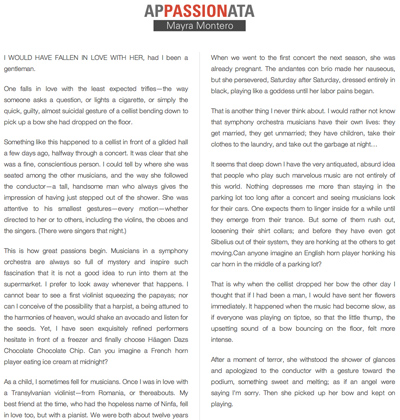
MAYRA MONTERO | Appassionata
Issue 12
I WOULD HAVE FALLEN IN LOVE WITH HER, had I been a gentleman. One falls in love with the least expected trifles—the way someone asks a question, or lights a cigarette, or simply the quick, guilty, almost suicidal gesture of a cellist bending down to pick up a bow she had dropped on the floor. Something like this happened to a cellist in front of a gilded hall a few days ago, halfway through a concert. It was clear that she was a fine, conscientious person. I could tell by where she was seated among the other musicians, and the way she followed the conductor—a tall, handsome man who always gives the impression of having just stepped out of the shower. She was attentive to his smallest gestures—every motion—whether directed to her or to others, including the violins, the oboes and the singers. (There were singers that night.)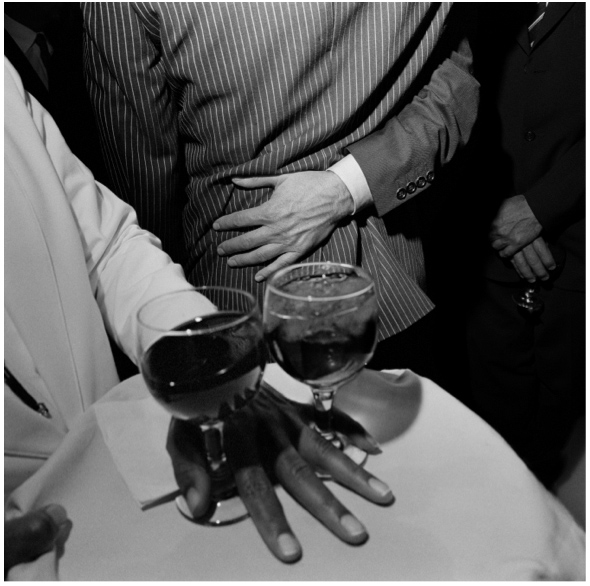
LARRY FINK | Hands On
Issue 12
Now that the Oscar parties have gone for this season and that the atmosphere hath born such devastating storms within the heartland, it may give some small comfort to attend, at least in pictures, the grand stand illusions of what has past. Lets start with an elegant black hand providing service in between the valley of pinstripe diagonals…This image is from the book The Vanities published by Schirmer Mosel.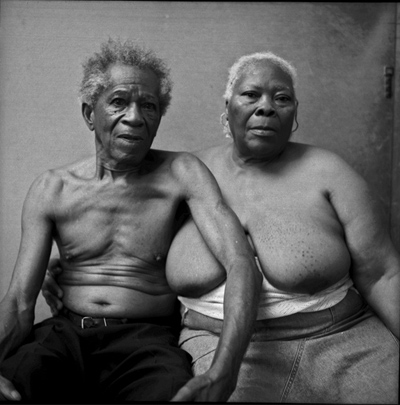
MARCIA MICHAEL | The Study of Kin
E-cite, a slide show presentation featuring a selection of five online blogs and magazines — New York Times Lens Blog, Time Magazine Lightbox, NPR Picture Show Blog, PDN Photo of the Day Blog & Visura Magazine—that have inspired the FotoVisura community. In a collaborative effort, each of these forums has created a unique presentation to represent their respective platforms.

XIAOMEI CHEN | Puzhu In Transition
Wind whistles through the leafy forest. In the distance, the sound of cutting bamboos mixes with the murmur of people chatting, birds chirping, cocks crowing, and oxen snorting. Dogs bark sporadically. Sometimes bamboo logs rumble down the hillsides, their clatter muffled by the filter of the forest.A tiny village sits at the edge of this green world, surrounded by the sights and sounds of Chinese villages stretching back for generations. This tranquility is what the cities lack, what city inhabitants can recall only in dreams. It is what people love about Puzhu, but must leave behind.

NOTES FROM JAPAN | Gianni Giosue
Each journey involves traveling in time and space. Moreover each journey originates a journey within ourselves. We meet people, we think about what they say. We consider how life is working and why we exist. I see the crumbs then try to follow and understand them. For me every time I travel my senses are on full alert, I tend to be very receptive and responsive. Every time I have the chance to discover something new about me and others.
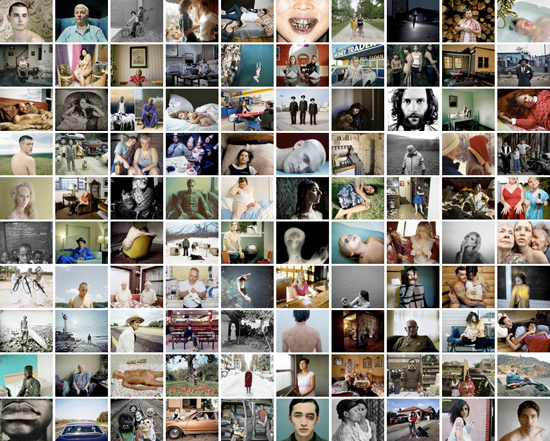
Photo Editors Andy Adams & Larissa Leclair on 100 Portraits
Andy: Online publishing and community collaboration are inspiring forces in my photo work and this project is another part of my mission to promote significant artists to a global audience of people who are passionate about photography. Like Flak Photo, I consider 100 Portraits a public art project, so I mounted a complementary digital exhibition so it would be immediately accessible to an international online audience. The community has been amazingly supportive of the project and Larissa and I are sincerely grateful to everyone who mentioned the exhibition in their blogs and on Facebook and Twitter. Since launching last fall 100 Portraits has been viewed by more than 54,000 visitors from 24 countries, which far surpassed my expectations. So, in a way, the project really celebrates the role that the online audience plays in the discovery and dissemination of work produced by photographers in the Internet Era.

SUSAN A. BARNETT | Not In Your Face
In the series Not In Your Face the t-shirt is starkly evident but these photographs are not about the t-shirt per se. They are about the stories of people who tell their own story. I look for individuals who stand out in a crowd by their choice of the message on their back. The messages are combinations of pictures and words that are appropriated from contemporary culture but have the unique effect of mixing up meanings and creating new meanings. On the streets these personalities create their own iconography that explores the cultural, political and social issues that have an impact on our daily lives.

BARTOSZ NOWICKI | October
In October 2009 a series of rallies were called by the “English Defence League” in Leeds and their welsh associate, “Welsh Defence League”, in Swansea and Newport. The group first appeared in Luton in April and initially claimed that it was responding to a protest against British troops returning from Afghanistan organised by a fringe Muslim organisation, but its “Support our troops” demon-strations were used as an excuse to attack Muslims.

A Moment With Larry Fink
My mother was a Marxist and an organizer, but she was an elegant gal. She liked to wear minks and furs, and vacation in Florida. And she quit the party because the party was rigid and puritanical. She said: “It is ridiculous. Why sublimate your need for elegance and joy and class and style and fun — for the cause? The cause will be there forever, perhaps. I won’t. I am going to live my life as fully as possible.”
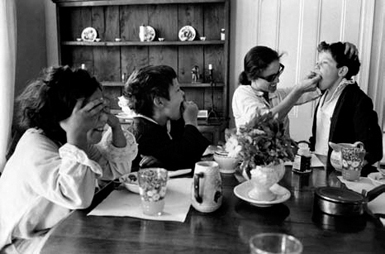
CHARLES HARBUTT | The Unconcerned Photographer
Issue 12
I chose to show this film at the start of my talk tonight because in many ways it is relevant to my topic of change. First of all, the entire Magnum Crisis in the America project, from which the film was made, was very much a punctuation mark in my career—whether an exclamation point, question mark, comma or period—I’m not sure yet. But I do know a fundamental change has occurred in my relationship to my medium.
STEPHEN REISS | Home: A Portrait of a Unique American Family
According to a study conducted by the Williams Institute on Sexual Orientation Law and Public Policy at the University of California Los Angeles, same-sex couples in the Bronx are more likely to have children than those in any other New York City borough and 49% of those couples have children. Eshey Scarborough and her partner Paris Amari run a foster home for at-risk youth in Mott Haven, located in the South Bronx, one of the poorest congressional districts in the country.

CHARLES HARBUTT | Kertesz—Manchester Festshrift
Issue 12
In 1980, the city of Salford in England mounted a huge photography festival. The director asked me to help arrange a large purchase of Kertesz’ work. It would be held by a trust which would provide for pictures from that collection to be on perpetual display in a gallery of the Halle orchestra hall. Kertesz was delighted because while many museums owned prints, they could just as easily let them molder away in storage as show them. When the collection decided to honor Andre on his 90th birthday with a festschrift/catalog, they asked me to write an essay for the book.
BRYAN MELTZ | Resettled: Clarkston, Georgia
Arbai Barre Abdi is 1 of nearly 13,000 Somali Bantu refugees that were resettled throughout the US beginning in 2004. I met Arbai that same year, when she and her four children were placed in Clarkston, Georgia directly from a refugee camp in Kakuma, Kenya. Over the past decade, Clarkston, a former railroad town outside Atlanta, has been transformed into the Ellis Island of the South for refugees from every corner of the globe. It is estimated that one of every three of Clarkston’s residents are immigrants and over sixty languages are now spoken in this small Southern town.







